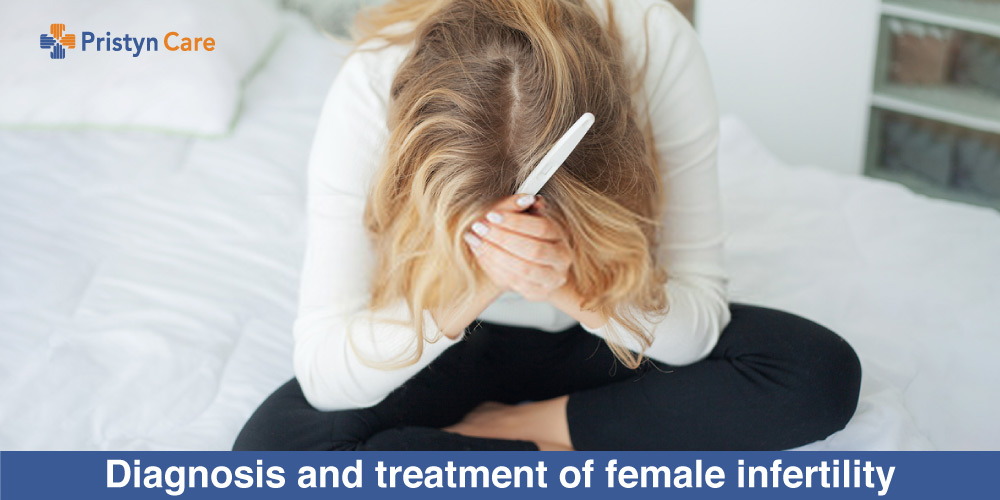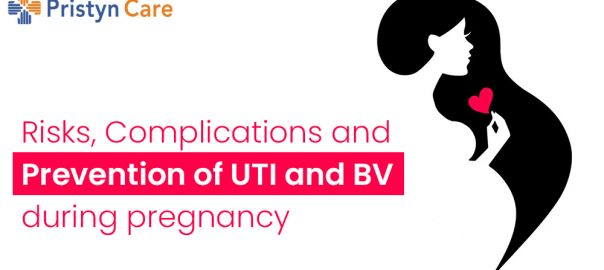![]() Views: 314
Views: 314
Diagnosis and treatment of female infertility
Infertility is a situation that approximately 2 out of 10 couples fall victim to. An individual or a couple is considered infertile if they are not successful in getting pregnant even after one year of trying. It can be because of some unusual condition either with the male or the female, that is, because of ...
ps://www.pristyncare.com/blog/category/ivf/">male infertility or female infertility. . Read moreDedicated Support at Every Step!
Our Doctors are available 24 hours a day, 7 days a week to help you!
Around half of the cases of infertility in couples is because of female infertility and is responsible for thirty percent of all infertility cases.
Table of Contents
Process for diagnosis
If you have not been able to get pregnant even after trying persistently for over a year, you should consult your doctor and learn about the appropriate treatment options for infertility.
The following are some treatment options for female infertility.
- You can go for an at-home over the counter ovulation prediction kit. It detects any fluctuations in the luteinizing hormone. This hormone is secreted during ovulation, so the kit can tell if you are ovulating properly or not.
- A hysterosalpingography test tells if the fluid passes out of the uterus. If the test shows any anomalies, you will need further testing and evaluation.
- An ovarian reserve test will help you two to know if the size and number of eggs are suitable for ovulation.
- You can have a pelvic ultrasound. It will scan your uterus and fallopian tubes. The doctor might also suggest a sonohysterogram to examine details of the inside of the uterus. Such details cannot be inspected with a regular ultrasound.
In rare situations, if the doctor suggests, the following might be made part of your testing:
- You may have to take undergo a hysterectomy so that the doctor may look into your fallopian tubes and uterus.
- A laparoscopy can be conducted to detect the presence of endometriosis, blockage, or irregularities in the uterus or ovaries.
- You might be suggested genetic testing to ensure that there is no genetic defect that is responsible for infertility.
No Cost EMI, Hassle-free Insurance Approval
Treatment options for female infertility

The course of treatment depends on the results of the testing. The results of the evaluation would determine the cause of infertility and that will help the doctor to determine the best treatment options for you. Some of the options for the treatment of infertility are listed below.
Fertility Drugs
Absent or irregular ovulation may be the cause of infertility. This can, in most cases be treated with hormonal medications, called fertility drugs. These fertility drugs and hormonal medications have potential side effects, like causing multiple pregnancies. It is recommended to take fertility drugs only if prescribed by a fertility specialist.
Usually, treatment with hormonal medicine, GnRH analog, is conducted prior to giving fertility drugs. GnRH analog prepares the body for ovulation in a timed cycle.
Surgical Procedures
Following treatment with hormonal medications and fertility drugs, the eggs travel freely from the ovary to the uterus if the fallopian tubes are in good health. But in some cases, surgical methods are required to harvest the mature eggs after the fertility treatment.
Some examples of surgical methods that can be followed are as follows:
- Intrauterine Insemination: This procedure can be used to transfer sperm directly into the uterus using a syringe or a catheter.
- In Vitro Fertilization: This treatment collects the eggs released by the ovaries and combines them with sperms in the laboratory to produce embryos. Then, one or more embryos are inserted in the uterus.
This treatment does not guarantee pregnancy, but if one or more uterus implants itself in the uterus, there can be a single or
multiple pregnancies. It should be noted that this treatment requires hormonal treatment beforehand. - Gamete Intrafallopian Transfer and Zygote Intrafallopian Transfer: The combination of these two treatments help women with infertility to get pregnant, but they require one of the fallopian tubes to be healthy.
Zygote intrafallopian transfer removes eggs from the ovary surgically. These eggs are combined with sperm in the laboratory and they produce embryos. These embryos are inserted in the fallopian tube and are allowed to travel to the uterus by themselves.
In gamete intrafallopian transfer, the eggs and sperm are introduced in the fallopian tube prior to fertilization and are allowed to fertilize by themselves.
This treatment is a variant of IVF, and also requires prior hormonal treatment.
When should you consult a doctor?

If you have not been successful in getting pregnant even after one year of continuous trying, you should consult to a gynecologist about it and think about testing yourself and your partner for infertility issues.
You should talk to your doctor after six months of trying if you are over 35 because getting pregnant is more difficult at this age.
Also Read:










